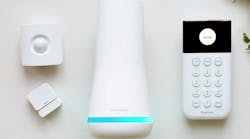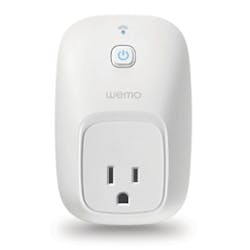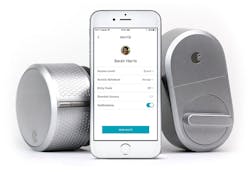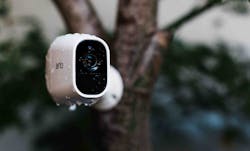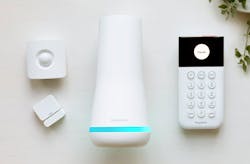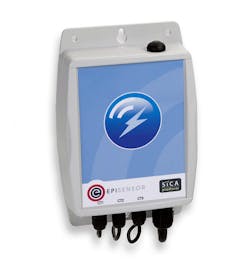Download this article in PDF format.
In many ways, the internet has become a form of “hard drive” for the masses. It’s a place to store and find a seemingly unlimited amount of information as needed. The internet can be accessed from almost anywhere, with wired or wireless communications devices such as cellular telephones and WLAN laptop computers. But it’s not just people connecting to each other via the Internet: Billions of things, as in Internet of Things (IoT) devices, also hook up with the internet—a number that’s expected to grow dramatically in the next few years.
Recent market forecasts by organizations such as Gartner estimate more than 20 billion worldwide IoT devices by 2020. While these IoT devices will occupy some of that seemingly unlimited memory storage capacity available from the many computers comprising the internet, they will also support numerous functions in homes, factories, even outdoors.
Many IoT devices are designed to make environments “smarter,” including motor vehicles, homes, offices, and cities. While some may argue that the only “smart” cities will be those without IoT devices, the rise in applications of IoT technology is apparently unavoidable and will no doubt become relatively mundane with time. For example, users can check the temperature of the rooms in their homes while still at work by gaining remote access to the internet via cellphone.
Growing interest in IoT devices is evidence of how the wireless/cellular telephone has evolved into a “control center” for many users. The wireless/cellular telephone is not only an information center, it serves as a remote control for IoT devices.
The basic concept of a “smart home” is a residence in which electronic devices such as light switches, thermostats, radios, and televisions are connected to the internet and can be controlled by voice commands as a user walks through, or remotely by having a wireless/cellular telephone or “smartphone” function as a wireless remote control. The IoT devices are also sensors that can gather and exchange data, thus enabling, say, room temperatures to be adjusted according to occupancy to save on heating bills, or perform other dynamic actions for efficiency and economy.
Although many well-known professional organizations such as AT&T Business and IBM with its IBM Watson IoT service can organize a “smart business” with appropriate IoT devices, the majority of IoT users learn as they go with the technology. This typically involves a close-range wireless communications technology, such as Bluetooth or Wi-Fi, to connect IoT devices to a local wireless network for access by a user’s cellphone. The phone would be equipped with appropriate application software to control the IoT devices.
The worldwide use of the interconnected computer servers that form the internet has grown into a massive global network known simply as “the cloud.” In turn, IoT devices connected to any network with internet capability can be accessed by any communications device with similar access to the internet.
The Quickening Evolution
The use of things connected to the internet for different reasons isn’t all that new—it’s been taking place for several decades. And the number of commercially available IoT devices has grown quite large for applications within a home or office, around a home, for medical or health purposes, even for vehicular purposes as part of a smart car. In addition, as mentioned, for all IoT applications are typically controlled via the “brains” of the smart home or office, meaning a cellphone or tablet/laptop computer.
1. Some IoT devices are as simple as this WeMo switchable ac outlet, which enables remote control of home electronic appliances using an existing Wi-Fi network and a free downloadable application to run on a smartphone. (Courtesy of Belkin)
The number of commercial IoT products is currently in the thousands. Some are as mundane as night switches or ac outlets that can be turned on and off from a cellphone using Bluetooth or Wi-Fi (Fig. 1). Some are functions that have been available as IoT devices for many years, such as remote-controlled thermostats that control a home or office building’s temperature. Similarly, air conditioners can be remote-controlled via IoT outlets during warmer months. This allows, for example, a facilities manager to monitor and adjust the temperatures of a building and its different offices from a central, networked location.
Beyond the fundamental wireless control of heating, cooling, lighting, and power, there’s been a rapid rise in the use of IoT devices for security purposes (Fig. 2). In some applications, the security is as straightforward as a “smart lock” for a home’s front door.
2. IoT door-lock products can be programmed to work with voice commands to replace the use of keys. (Courtesy of August Home)
Suppliers such as August Home actually offer third-generation IoT door-lock products that essentially turn a cellular telephone into a set of door keys. The latest smart locks from August Home can work with Echo and Alexa voice commands from Amazon to allow residential access to family and selected guests. They can also perform automatic functions, such as opening a locked door as the “key-bearer” (holder of the cellphone) approaches the front door as well as locking the door as the cellphone holder leaves the house.
Some of the more popular IoT devices are those used to locate lost personal effects, like keys or wallets. Tile, which is known for its key-finding use of IoT and Bluetooth technology, helps users who prefer to open their doors the old-fashioned way, but may have misplaced their keys. The company’s object-location technology is in use throughout the world in hundreds of countries, and has recently been applied to a tracking device that’s thin enough to remain within a wallet and help to find it with a smartphone (Fig. 3).
3. IoT-based object-location technology has been applied to a tracking device, thin enough to remain in a wallet, which can be found using a cellphone when lost. (Courtesy of Tile)
Keeping Watch
In addition to locking the doors of a residence, many IoT devices can maintain remote surveillance over a home using IoT-enabled surveillance cameras. Most of these IoT cameras are simple to install and use, and can even record video to the cloud over multiple days.
For example, the Arlo Pro IoT security cameras from Netgear include motion and sound detection (Fig. 4). The latest versions of the cameras (Arlo Pro 2) boast high-definition 1080p video resolution and support for Amazon Alexa voice commands. The Arlo Pro cameras allow users to connect a USB memory device to the camera base station for capture of video over time. The same base station contains a 100-dB siren that can be activated from anywhere by means of IoT network access.
4. Arlo Pro IoT security cameras feature advanced capabilities, such as motion and sound detection, which can be accessed through the internet. (Courtesy of Netgear)
The iCamera Keep Pro from iSmartAlarm is an IoT security camera that’s activated by motion and sound detection. It can perform time-lapse and event-triggered video, and includes a motion-tracking feature that’s able to follow a subject around a room. The camera has 1080p high-definition video resolution, and can store video data on a built-in SD card slot or to the cloud. The device features a 140-deg. field of view and night vision, and can improve its chances of keeping a subject on camera by means of motorized panning and tilting.
Some IoT security systems, such as those from SimpliSafe, are available as kits with different components for providing the amount of security coverage depending on the size of the house. The firm’s security kit, known as “The Foundation,” includes four essential components (Fig. 5): a base station, a data-entry keypad, an entry sensor for a doorway, and a motion sensor that can be placed at a key location around a home.
5. “The Foundation” is a basic IoT-based security kit that allows a user to install a security system in a small house or apartment. (Courtesy of SimpliSafe)
The kit’s components work together to provide remote monitoring and protection via the Internet. If one of the sensors detects an unwanted presence, an online message is sent via Internet and a 95-dB siren is sounded in the home by the base station. The kit and larger ones offered by the company are available with and without monitoring services.
Industrial IoT
For industrial IoT (IIoT) applications, devices such as the ZEM-61 wireless three-phase electricity monitor (Fig. 6) from EpiSensor provide a simple means of remotely monitoring the energy use in a commercial or industrial facility, such as a warehouse. It’s essentially a miniature test system with a 2.4-GHz ZigBee wireless radio housed within a compact waterproof enclosure measuring just 192 × 128 × 40 mm.
6. The ZEM-61 is an IIoT three-phase electricity monitor that can remotely monitor the energy use in a warehouse or factory. (Courtesy of EpiSensor)
Through IoT connections, the EpiSensor can report on a variety of energy-related parameters, including voltage, current, kilovolt-amps (kVA), and kilowatt-hours (kWh). It offers a wide voltage measurement range of 75 to 265 V, and an extended current measurement range of 0.1 to 3 kA with accuracy of ±1% or better. The IIoT unit features over-the-air software upgrade capability and can relay data from other wireless nodes within a facility.
In any operating environment, it’s easy to see the convenience of IoT-enabled equipment and the attendant quick growth of IoT devices. Rather than try to control each IoT device with a separate software application on a smartphone, it can sometimes make more sense to use what are known as hub gateways. They allow for the connection of, and communication between, many different types of IoT devices. These may be devices that normally communicate on Zigbee, Bluetooth, and Wi-Fi, and would require those separate wireless links. With a hub gateway, devices with different wireless protocols can be controlled through that single gateway; for example, using voice control and programmed voice commands to control different IoT devices.
As the number of IoT devices escalates, so too does the concern over cybersecurity. There’s always the threat of computer hackers gaining access to a home or business through a vulnerability in a network made possible by an IoT weak link.
Manufacturers of IoT-based products typically institute end-to-end security testing a part of every new product’s development cycle, to better understand the capabilities of different IoT products in withstanding attacks from hackers. For example, a smart camera that’s designed as part of the security system for a home can also function as a two-way monitoring device by a hacker gaining access from the outside. Organizations such as Securelist have performed extensive experiments on different IoT devices and network setups to identify weak links and access points where hackers could gain access to an IoT-populated network.
